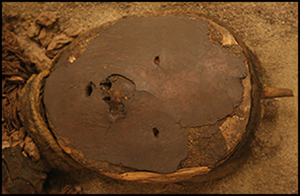Article contents
Relational bodies: affordances, substances and embodiment in Chinchorro funerary practices c. 7000–3250 BP
Published online by Cambridge University Press: 31 August 2021
Abstract

Funerary art has the body as its main material component, expresses responses to death and offers insight into relationships between the living and the dead. Chinchorro hunter-gatherer-fisher societies along the Atacama Desert coast provide a key example of such connections, having developed one of the world's oldest-known systems of post-mortem body transformation (c. 7000–3250 BP). A study of 162 modified Chinchorro bodies identifies diachronic changes in these practices, including a decrease in internal stuffing—adding invisible contents that created corporeal volume—and an increase in external body treatment that created visible features. The authors propose that such manipulation was a meaningful form of social embodiment designed to construct a collective identity.
Keywords
- Type
- Research Article
- Information
- Copyright
- Copyright © The Author(s), 2021. Published by Cambridge University Press on behalf of Antiquity Publications Ltd.
References
- 7
- Cited by




